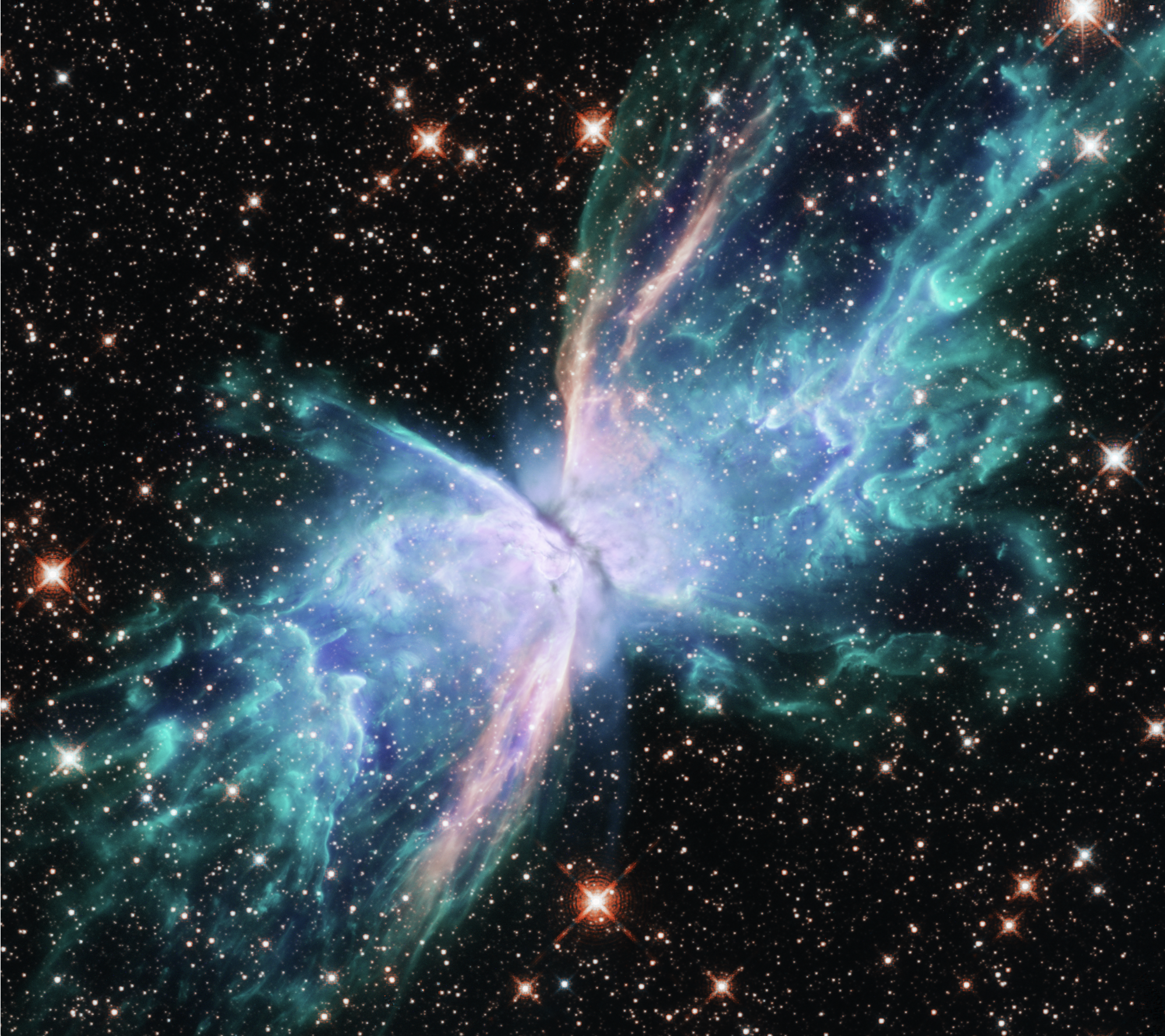
NGC 6302: The “Butterfly Nebula”
Hubble was recently retrained on NGC 6302, known as the "Butterfly Nebula," to observe it across a more complete spectrum of light, from near-ultraviolet to near-infrared, helping researchers better understand the mechanics at work in its technicolor "wings" of gas. The observations highlight a new pattern of near-infrared emission from singly ionized iron, which traces an S shape from lower left to upper right. This iron emission likely traces the central star systemís most recent ejections of gas, which are moving at much faster speeds than the previously expelled mass. The star or stars at its center are responsible for the nebula's appearance. In their death throes, they have cast off layers of gas periodically over the past couple thousand years. The "wings" of NGC 6302 are regions of gas heated to more than 36,000 degrees Fahrenheit that are tearing across space at more than 600,000 miles an hour. NGC 6302 lies between 2,500 and 3,800 light-years away in the constellation Scorpius.
